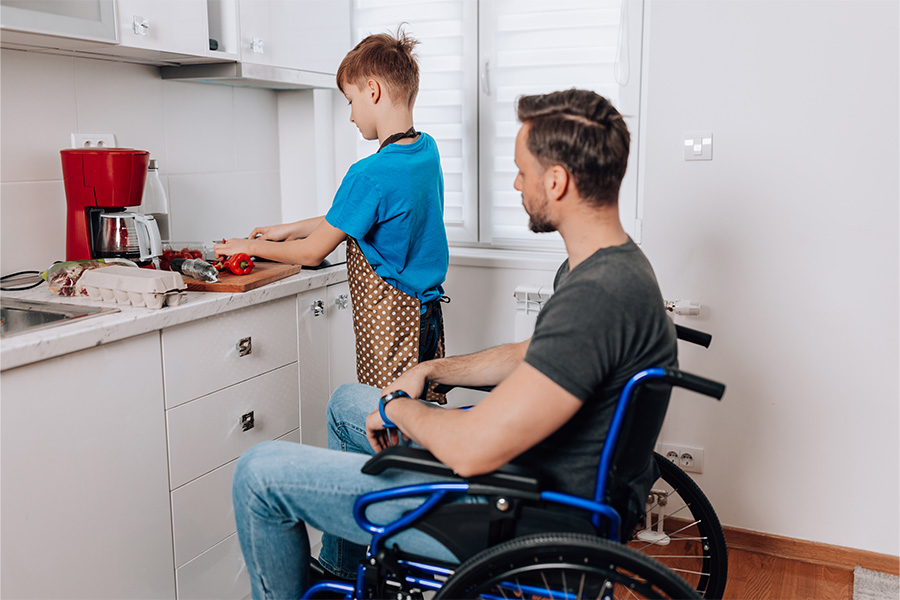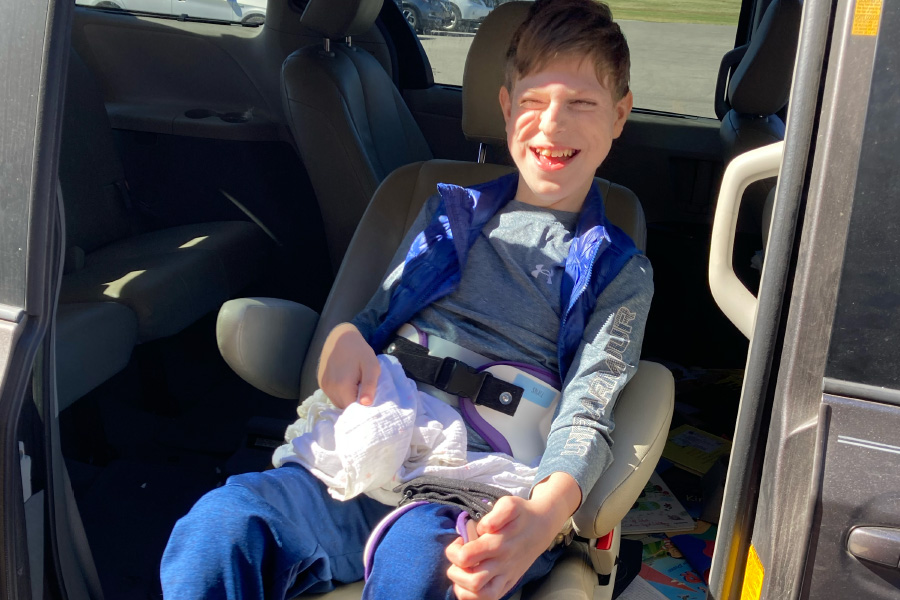If your child is unable to meet their nutritional needs by mouth, a feeding tube provides a way to obtain life-sustaining
nutrients. This method of “eating” bypasses the mouth and esophagus and delivers nutrition directly into the stomach or small intestine.
Tube feeding is a tool that allows your child to thrive. It’s common and normal for parents to have conflicting feelings about tube feeding. Wanting to feed your child is a natural instinct, and being unable to do so through typical methods can bring feelings of failure, frustration, inadequacy, anxiety, and depression. Parents of tube-fed children can feel alienated from their typical peers, and the stress of learning new routines and being dependent upon formula for your child’s survival can be overwhelming.
It’s also common for parents of tube-fed children to feel profoundly grateful for the technology at the same time. Many parents express how the feeding tube saved their child’s life, helped them thrive, provided essential nutrition, or helped their child to grow. You can love being able to meet your child’s needs and help them thrive, and hate that feeding tubes are necessary. All of your feelings are valid.
You and your child’s healthcare team will come up with the plan that meets your child’s nutritional needs, is appropriate for their medical conditions, and best fits your child’s and your family’s lifestyle. Your child’s healthcare team may include their pediatrician, specialty doctors, nurses, registered dietitian, occupational therapist and other healthcare professionals.
Feeding your child through a feeding tube may take some getting used to, but you will get the hang of it with support from family, friends, and your child’s healthcare team.
What you need from your child’s healthcare team
Before leaving the hospital, take some time to think about what this routine will look like at home for you. Your child’s healthcare team may have access to resources that make family life easier with a tube-fed child. Don’t be afraid to ask them how to get the medical supplies, equipment, or other resources you think you might need at home. Here are some important things to think about:
- A discharge plan that addresses everything you and your tube-fed child will need at home.
- Work with your child’s healthcare team to plan a feeding schedule that fits with child care, school, work, appointments and sleep.
- Take extra time with your case worker, case manager, case coordinator, social worker, or registered dietitian. You are not taking advantage of them; they are here for you and your child. Make sure you fully understand what your child needs, what ongoing treatment will be necessary after discharge, and what follow-up to expect.
- Education about tube feeding that starts well before it is time to leave the hospital.
- Does the hospital have printed resources you can save and take home? Do they recommend a pump and formula provider and refer you before discharge? Is there a registered dietitian available to walk you through pump setup, formula administration, and troubleshooting? Is there an emergency line to call if your child’s pump is not working? Are there backup methods for delivering formula to your child in an emergency?
- Adequate time to prepare for taking a tube-fed child home.
- Find out from your child’s healthcare team what equipment and space is required at home, and discuss how to prepare your home before discharge. Preparing your home before your child is discharged is one less worry, and can help with anxiety during the transition.
- Contact information for healthcare professionals who can help.
- Keep a record of all the members of your child’s healthcare team, and note who is responsible for what. Ask for contact information and/or emergency numbers from every healthcare team member. If your child will have follow-up appointments, schedule those appointments before discharge and save the contact information for those clinicians. remember, you and your child have the right to a dedicated healthcare team who is…
- knowledgeable about caring for a tube-fed child
- committed to caring for your child
- clear on who is responsible for each aspect of your child’s care
- available when you need them
- Keep a record of all the members of your child’s healthcare team, and note who is responsible for what. Ask for contact information and/or emergency numbers from every healthcare team member. If your child will have follow-up appointments, schedule those appointments before discharge and save the contact information for those clinicians. remember, you and your child have the right to a dedicated healthcare team who is…
Tips for coming home with a tube-fed child
You’re finally home! What comes next? Here are some tips to help you and your family adjust to life with a tube-fed child:
- Stick to the feeding plan prescribed by your child’s doctors. If you miss a feeding, ask your child’s healthcare team if you can fit it in at another time. If your child uses a feeding pump, ask your formula provider about a complementary enteral backpack. The backpack is designed to carry the pump so that your child can receive tube feeding while at school or away from home.
- If your child is old enough to have established activities, encourage your child continue to participate in their normal daily routine as much as possible. Feeding pumps can be portable, allowing your child to continue to participate in a wide variety of activities and sports outside the home.
- Mealtimes are more than just nutrition: they are bonding family time. Integrate feedings into family mealtimes when possible, so that you can all eat together. If your child is an infant, pull their high-chair up to the table, and emphasize that the formula is going into the baby’s tummy (not tube) and that it’s a loving process.
- If you’re the parent of a very young infant, know that it is still possible to bond with your child while tube feeding. Talking to, humming or singing while your baby eats can comfort your child just as it would if you were bottle or breast feeding. Hold your child’s hand and looking directly into their eyes while they receive nutrition.
- Keep track of your child’s feeding and medication schedule and how he or she responds to feedings. Write down any questions or concerns and take them to your child’s medical appointments.
- Keep track of your child’s weight and height. Your healthcare team will evaluate these measurements at regular visits to make sure your child is receiving adequate nutrition for growth and development.
- Be prepared for the unexpected. When you leave the home, have enough formula and supplies on hand for your child’s daily feedings in case something delays you.
- Peer support is a powerful resource! Connect with other familes of tube-fed children for day-to-day peer support. Ask your child’s healthcare team or community support resources and recommendations. There may be in-person support groups, online forums, community programs, or other local and regional resources available, including support groups for your child’s diagnosis, or foundations relevant to your child’s challenges. Social media platforms have pages and groups dedicated to tube-feeding parents and specific to a wide variety of diagnoses. The Oley Foundation is one example, providing support to tube-fed adults and children via newsletters, a vido library, an online community forum, and support groups.
For more information and support, including video how-to’s and feeding tube troubleshooting, visit our Nutrition Community and GROW Community.















